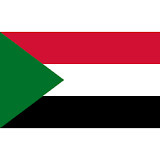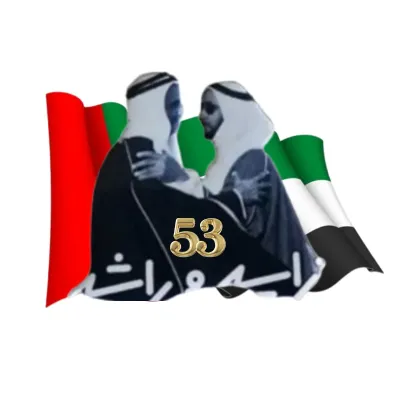Meaning of Colours of Sudan Flag
What is the Meaning of the Colours of Sudan Flag?

Flags are more than just pieces of cloth; they are potent symbols representing the identity, values, and aspirations of a nation. The Sudanese flag, with its vibrant colors and distinct design, carries deep historical and cultural significance. In this blog post, we delve into the meaning behind the colors of the Sudanese flag, unraveling the rich tapestry of symbolism woven into its fabric.
The Flag of Sudan: A Visual Representation of Identity
The flag of Sudan, adopted on May 20, 1970, holds a profound significance for the people of this diverse nation. Comprising three horizontal stripes—red, white, and black—from top to bottom, with a green triangle on the hoist side, its design is simple yet evocative.
Colors
The Color Red: Symbolizing Struggle and Sacrifice
At the top of the Sudanese flag lies the bold red stripe, a color steeped in symbolism. Red represents the struggle for independence and the sacrifices made by the Sudanese people in their quest for freedom. It serves as a poignant reminder of the bloodshed and resilience that have characterized Sudan's history.
Throughout Sudan's tumultuous journey, from colonial rule to civil wars and conflicts, the color red has remained a steadfast symbol of the nation's unwavering determination to overcome adversity and forge its own destiny. It embodies the spirit of resistance and resilience that defines the Sudanese people.
The Color White: Signifying Peace and Unity
Beneath the red stripe lies the pristine white band, symbolizing peace, unity, and harmony. In a nation marked by ethnic diversity and cultural plurality, white serves as a beacon of hope for reconciliation and mutual understanding.
White also represents the aspirations of the Sudanese people for a future free from strife and division. It encapsulates the collective desire to build a society where all citizens can coexist peacefully, irrespective of their differences.
The Color Black: Embodying Sudan's African Heritage
The bottom stripe of the Sudanese flag is adorned with the color black, which holds profound significance in the context of Sudan's cultural heritage. Black symbolizes Sudan's African identity and heritage, acknowledging the country's deep-rooted connections to the African continent.
Beyond its cultural connotations, black also represents the fertile soils of the Nile Valley, which have sustained civilizations and livelihoods for millennia. It serves as a reminder of Sudan's rich agricultural heritage and its vital role in feeding both its own people and the wider region.
The Green Triangle: A Testament to Islam and Agriculture
Adjacent to the hoist side of the flag is a prominent green triangle, which holds dual significance for Sudan. Firstly, green is the traditional color of Islam, representing faith, prosperity, and growth. In Sudan, where Islam is the predominant religion, the green triangle serves as a symbol of the nation's Islamic heritage and values.
Secondly, green also symbolizes the country's agricultural wealth and natural resources. Sudan's fertile lands, nourished by the waters of the Nile, have long been a source of sustenance and prosperity for its people. The green triangle thus pays homage to Sudan's agrarian roots and its vital role in feeding the nation and beyond.
Historical Significance of Sudan Flag
Colonial Legacy and Independence Struggle
The history of the Sudanese flag is deeply intertwined with the nation's struggle for independence from colonial rule. Under Ottoman and British control for much of the 19th and 20th centuries, Sudan experienced a tumultuous period marked by exploitation, oppression, and resistance.
During this era of colonial domination, Sudan lacked a distinct national flag, with various flags representing different regions and colonial powers. It wasn't until Sudan's burgeoning nationalist movement gained momentum in the mid-20th century that the need for a unifying symbol became apparent.
The Flag of the Mahdist State
One of the earliest flags associated with Sudan's struggle against colonialism was the flag of the Mahdist State, established during the Mahdist revolution in the late 19th century. This flag, characterized by its predominantly black color with Arabic inscriptions in white, symbolized resistance against foreign occupation and the assertion of Sudanese sovereignty.
Although short-lived, the Mahdist State and its flag laid the groundwork for Sudan's future independence movement, inspiring subsequent generations of Sudanese nationalists to challenge colonial rule and assert their right to self-determination.
The Emergence of a National Symbol
It wasn't until Sudan gained independence from joint British-Egyptian rule on January 1, 1956, that the need for a distinct national flag became pressing. Following independence, a competition was held to design a new flag that would embody Sudan's identity and aspirations as a newly sovereign nation.
The winning design, adopted on May 20, 1970, featured the iconic tricolor composition of red, white, and black horizontal stripes, with a green triangle on the hoist side. This design, while simple in appearance, carried profound symbolic significance, reflecting Sudan's cultural diversity, historical struggles, and aspirations for a brighter future.
Flags are not mere symbols; they encapsulate the rich history and culture of a nation. The flag of Sudan, with its bold colors and striking design, carries profound historical significance. In this exploration, we delve into the historical roots of the Sudanese flag, tracing its evolution and unraveling the layers of symbolism embedded within its fabric.
Conclusion
The Sudanese flag is more than just a piece of cloth fluttering in the wind; it is a potent symbol of national identity, unity, and resilience. Through its colors and design, it encapsulates the hopes, struggles, and aspirations of te Sudanese people, reflecting their rich cultural heritage and diverse legacy.
From the fiery red of resistance to the tranquil white of peace, from the fertile black of the Nile Valley to the verdant green of Islam and agriculture, each element of the flag tells a story—a story of resilience, unity, and the enduring spirit of the Sudanese nation. As Sudan continues to navigate its path towards peace, progress, and prosperity, may its flag serve as a steadfast reminder of the values and principles that bind its people together in solidarity and hope.
Spotlight on Trending Promo Gear
Browse the most popular and trending Corporate Gifts
Promotional Sports Water Bottles
Promotional Sports Water Bottles
Promotional Sports Water Bottles
Back To School Gifts
Promotional Sports Water Bottles
Promotional Sports Water Bottles
Promotional Sports Water Bottles
Eco Friendly Bottles




















